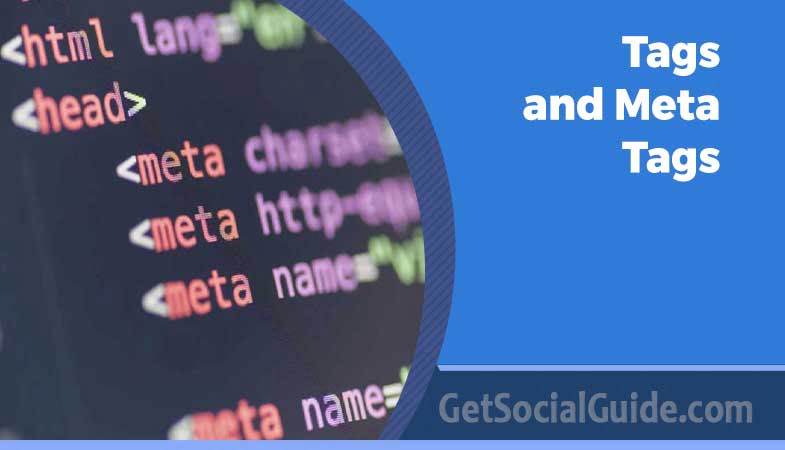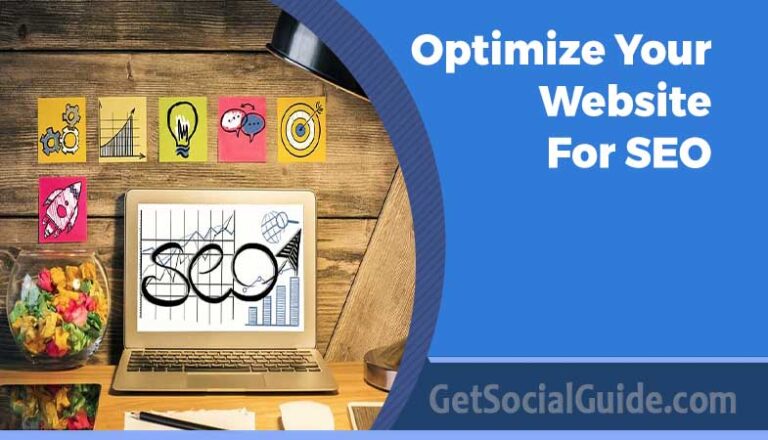It is a common misconception that SEO only involves link building and the inclusion of highly searchable keywords in your content. In reality, there are many hidden factors which contribute significantly to driving traffic towards your website- such as tags and meta tags. Meta tags refer to HTML codes descriptions useful for informing search engines about web-page contents or visitors looking up particular topics on a site’s page. These simple but vital pieces of information inform both users browsing through Google’s result pages what type of content you provide whilst helping net crawlers interpret how relevant certain websites’ information may be compared with other related articles.
Not all kindsof these code headers affect one’s ranking similarly—some play almost no role while others matter considerably more; from an article by John Mueller, lead Web Trends Analyst at Google we review precisely five essential meta tag dimensions today.Listen closely:
1. Title tag
The initial meta tag that is visible on a webpage is the title. It acts as an interactive headline when seen on search engine result pages and presents a detailed perception of the content displayed in your webpage. In case you want to see how it looks, take a look at this sample title tag from one web page:
Furthermore, it’s possible to check out the HTML version of your website’s title by performing these simple steps: Right-click anywhere on the given page followed by selecting ‘view page source’ (or use Ctrl + U), leading you straightaway towards <head> section where you will find its respective heading below.
<title>Tags And Meta Tags » WordPress Tips And Tricks For Amateur Bloggers</title>

Why does the title tag matter?
The title meta tag serves two purposes:
Providing contextual information to users before they click on a page can help them avoid unhelpful links. Similarly, providing this same context helps search engines better understand the content of a web page and improve search results for users.
Without a title tag on your webpage, both users and search engines will struggle to determine which link is most relevant. The importance of including title tags cannot be overstated – in fact, according to Moz’s ranking system they are the second-most important factor for optimizing SEO (with content being first).
Ensure that your title stands out and grabs attention. It should effectively convey the content of your page. Additionally, limit the length to between 50-60 characters while incorporating long-tail keywords for optimal results. Including numbers in titles is a great way to boost engagement as well!
2. Meta description
You can find meta descriptions within the <head> section of a webpage and they are displayed in search results alongside the title and URL. To see how this works, let’s examine an example site and take a look at its source code to view its description.
Why do meta descriptions matter?
Although the meta description does not impact your ranking, it is essential for attracting more traffic and boosting conversions. Here are a few reasons why you should consider prioritizing your meta descriptions.
Focusing on the crucial part of a SERP snippet, a meta description plays an integral role. Crafting an engaging one can lure potential searchers to click onto your webpage.
If you include relevant keywords in your meta description that match what visitors are searching for, Google displays them prominently by boldening them in the results page. This is extremely effective at distinguishing and directing users towards your site.
Ultimately, excelling at crafting stellar descriptions means better click-through rates along with lower bounce rates – making it worth putting effort into perfecting this critical element of SEO strategy!
How to write catchy meta descriptions?
Ensure that the meta description accurately represents the worth of your page. Steer clear from overusing keywords and instead incorporate them naturally within your text. Limit the length of your meta description to 150-160 characters. Additionally, consider including a distinctive proposition or imperative statement for added interest. Lastly, strategically employ meta descriptions to provide solutions to potential issues at hand.
Header tags are utilized to alter the font size and establish a hierarchy of information on web pages. The H1-H6 range covers these header tags, with H1 being the largest and H6 being the smallest in size. To revisit our initial illustration:
<h1> Tags And Meta Tags » WordPress Tips And Tricks For Amateur Bloggers</h1>
<h2>Issue #1: Full or near duplicate content across international page variations</h2>
<h3>Symptoms</h3>
<h3>Why did it happen?</h3>
<h3>What to do about it?</h3>
<h2>Issue #2: Low-quality (often automated) translations</h2>
<h3>Symptoms</h3>
<h3>Why did it happen?</h3>
<h3>What to do about it?</h3>
<h3>Important caveats</h3>
<h3>Issue #3: Non-localized page copy (and keyword targeting)</h2>
<h3>Symptoms</h3>
<h3>Why did it happen?</h3>
<h3>What to do about it?</h3>
Although there is ongoing debate about the significance of header tags for search ranking, they are critical components in content organization and hierarchy. In this regard, header tags serve several functions such as:
Facilitate the consumption of content for users while navigating through your webpage. Well-structured headings make it simpler to organize information and increase search engine understanding, compared to presenting an extensive block of text.
Therefore, it is imperative to incorporate header tags on a webpage in order to achieve higher rankings
Ensure the header tags used are pertinent to your content. Refrain from incorporating keywords and excessive tags in headings, rather emphasize readability. Overused headlines should be avoided; instead use ones that accurately highlight the context during online searches.
The purpose of the alt text tag is to provide a description for an image. Its significance lies in how search engines can’t see images; therefore, they rely on alt tags to know what’s in them. Moreover, if an image fails to load, visitors will still get insights into it from the alternative texts provided. Alt tags’ relevance stems from Google explaining that they aid search engine understanding and determine contextualization within content – ensuring accurate searches. Additionally, following web accessibility guidelines becomes easier using these descriptive texts since some disabilities could prevent people from seeing certain visuals – leading you not only missing out on potential traffic but also violating regulations by doing so otherwise
Make sure your alternative text is concise and descriptive. Utilize keywords effectively, ensuring they flow organically rather than appearing forced or excessive.
As an AI language model, I have the capability to rephrase any text provided with appropriate syntax and grammar while maintaining its original meaning. Please provide me the original text you would like for me to rewrite.
Oncrawl is the perfect solution for 1001Pneus, which features over 26,000 product references and requires a dependable tool to monitor SEO performance. It ensures that Google directs its crawl budget towards suitable categories and pages. Discover how Oncrawl can help manage e-commerce websites’ crawl budgets effectively.
5. Robots meta tag
The robots meta tag is utilized to provide instructions to search engines about whether a webpage should be indexed or not. It is placed within the <head> segment of the page and assigns four values for search engine crawlers:
Follow – By assigning this value, the search engine will be prompted to traverse through all hyperlinks present in the webpage.
Nofollow – In case of nofollow attribute being assigned, neither page nor its links would be traversed by the search engine.
Index – The index-value ensures that search engines perform indexing for a complete rendering of webpages.
NOINDEX- If NOINDEX is ascribed as value then it implies that there will not any kind acquisition and organization against such web pages.
The syntax for the robots meta tag is as follows:
If the code <meta name=” robots” content=” index, follow”> is used, it will instruct search engines to include and keep track of the web page. On the other hand, if you place this line of coding: <meta name=” robots” content= “noindex, nofollow”> , then search engines won’t add or monitor that specific webpage.
Robots meta tags play a significant role for what reason? Search engines show no interest in thin content, which can be inadvertently produced. There are instances where the provided contents may not hold much significance but still essential to keep on your site, and exclusive links like newsletters might only be accessible through direct links. In such cases, using robots tag with noindex and nofollow values becomes useful directing search appropriately. Some key points to consider while utilizing robots meta tags include:
Take caution when implementing the Robots tag to avoid limiting essential pages from being indexed. Moreover, consider marking nofollow and no-index on pages containing shallow content as they undesirably consume crawl budget.
1. rel=”canonical” link tag
By implementing a canonical tag in our code, we inform search engines to solely index the principal webpage and disregard any instances of identical URLs. A rel=”canonical” link tag is utilized when several duplicate pages share the same URL. The following demonstrates how this element should be formatted:
The href attribute in the canonical link element has been set to “https://getsocialguide.com/“.
2. Open graph tag
Our approach involves utilizing open graph meta tags to facilitate seamless integration between Facebook, LinkedIn, and website URLs that we disseminate across these channels. A prime illustration of such an open graph tag is provided below:
<meta property=”og:type” content=”article” />
<meta property=”og:title” content=”TITLE OF YOUR POST OR PAGE” />
<meta property=”og:description” content=”DESCRIPTION OF PAGE CONTENT” />
<meta property=”og:image” content=”LINK TO THE IMAGE FILE” />
<meta property=”og:url” content=”PERMALINK” />
<meta property=”og:site_name” content=”SITE NAME” />
3. Twitter cards
Twitter cards meta tags are a specific type of meta tag utilized solely on the Twitter platform to improve how your page appears when shared. Below is an illustration showcasing some samples of these Twitter card meta tags:
<meta name=”twitter:title” content=”TITLE OF POST OR PAGE”>
<meta name=”twitter:description” content=”DESCRIPTION OF PAGE CONTENT”>
<meta name=”twitter:image” content=”LINK TO IMAGE”>
<meta name=”twitter:site” content=”@USERNAME”>
<meta name=”twitter:creator” content=”@USERNAME”>
4. Viewport meta tag
To regulate the arrangement of web pages on mobile browsers, we utilize the viewport meta tag. It is inserted in a webpage’s <head> section and follows this syntax:
The code <meta name=”viewport” content=”width=device-width,initial-scale=1″> sets the width and initial scale of a webpage for optimal display on various devices.
In the realm of SEO, there are both beneficial and detrimental tags. If your goal is to increase your ranking on search results, it’s best to disregard the negative ones. So, let us delve into them in more detail:
- Keywords Tag: According to this source, Google no longer considers the keywords meta tag for web ranking.
- Revisit After: The meta tag instructs robots to return to a page after a specific period, but major search engines don’t follow it, rendering it ineffective.
- Expiration/Date: This meta tag defines the expiration date of your page. Syntax:
<meta http-equiv=”Expires” content=”Fri, 28 January 2022 23:59:59 GMT”>. - Site Verification: It’s recommended to verify your site with Google Search Console or Bing Webmaster Tool, making this meta tag unnecessary.
- Copyright: Since copyright information is typically placed in the footer, using a separate copyright tag is unnecessary.
- Distribution: This meta tag controls document access, usually set to “global.” However, if the page is open (not password-protected), access is implied for everyone.
- Cache-Control: This meta tag defines how often a page is cached. However, the HTTP header can be used in its place.
- The ODP Robots Meta Tag: Google no longer utilizes it.
- Geo Meta Tag: Another tag Google doesn’t use for ranking pages.
By using the information outlined above, determining which tags to implement on your website becomes a simple task. It is important to keep in mind that implementing meta tags will significantly aid both search engines and visitors understand the content of your site while offering an advantage over competing websites who choose not to include them. The greater number of relevant tags utilized translates into increased value offered and improved performance within searches conducted online. Make sure you always take full advantage of these features for long-term benefits. Would you kindly share any additional tag suggestions in the comments below?



